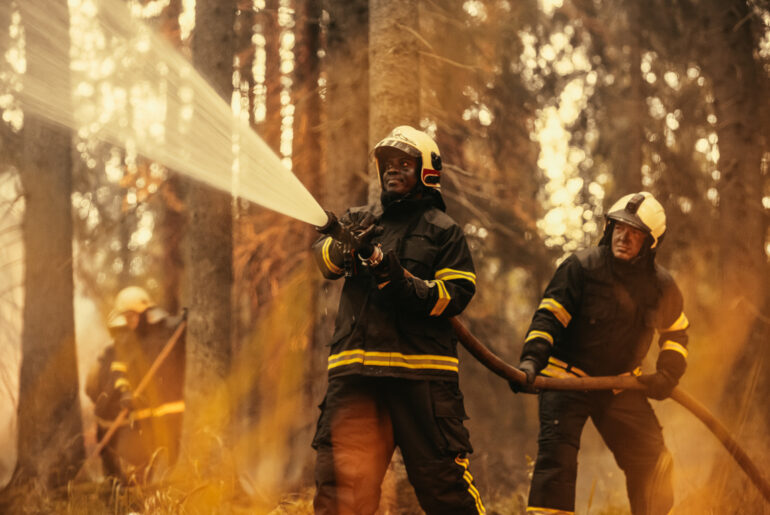The Firefighter Written Exam is a critical step in becoming a firefighter. In many cases, in order to be considered for an interview for an open position, you must pass the written exam. As such, preparing for the Firefighter Written Exam will be essential. Although the content on the firefighter written exam may vary department to department, the overall purpose of the exam is to help determine the aptitude of candidates in a range of skills, including Mathematical Reasoning, Mechanic Reasoning, Reading Comprehension, Spatial Orientation, Situational Judgment, Observation and Memory, and Personality. The amount of content that is on the Firefighter Written Exam may feel a little overwhelming. Here are a few tips on how you can prepare for each section and go into the written exam with ease.
General Preparedness
No clue what to expect on the exam? One of the best ways you can prepare and improve your firefighter exam score is by taking practice tests. Peterson’s online test prep gives you access to 3 full-length Firefighter exam practice tests. Simulating the real test experience helps you become familiar with the content of the exam while improving your test-taking time management and determining your strengths and weaknesses.
Mathematical Reasoning and Reading Sections
This section is designed to test your knowledge of mathematics and your skill level in reading. You’ll want to brush up on basic mathematics skills such as addition, subtraction, multiplication and division. Testing your reading comprehension will also be important prior to going into the exam. Many candidates are apprehensive about the level of difficulty for these questions, especially if it’s been a minute since high school. Peterson’s offers subject “refreshers” for all the information you may have forgotten since graduation day.
Mechanical Reasoning
During the firefighter training process, you’ll be required to develop skills and learn methods and procedures for fighting fires and performing rescues. This section of the test is used to assess how well you can visualize and apply reasoning on how objects work, operate, and interact. Some of the concepts that will be covered include: levers, gears, interpreting diagrams, belt and pulley systems, rope and pulley systems, and fluid dynamics. You can prepare for this section of the exam by taking online firefighter practice tests and by observing and studying the functionality of these mechanical terms.
Situation Judgment
The decisions firefighters make can have positive or negative outcomes in emergency situations. Therefore, firefighters need to make quick decisions under pressure to ensure a positive outcome.
Although the Situational Judgment section varies greatly among departments, taking generic situational judgment practice tests will help you gain confidence in quickly assessing a scenario and choosing the most appropriate response.
Spatial Orientation
Spatial Orientation examines your ability to comprehend and follow directions on a map in order to safely and effectively navigate to and around a scene. You’ll need to be familiar with directional orientation, figure identification, and direction of travel. You will want to become familiar with the geographical area in and around the fire district to which you are applying. Another helpful tip is to study maps and learn how to answer questions regarding maps and directions.
Observation and Memory
It is critical that firefighters accurately recall specific details at the scene of an emergency. Firefighters must both see and hear detailed information and communicate those details to other crew members by memory and listening skills.
Videos will be presented on this section of the exam and you’ll be required to recall and answer questions based on the sequence of events presented in the videos. You will not be allowed to take notes while the videos are playing.
Personality
In this section, the department you are interviewing with will be assessing whether or not you’ll be a good fit. While there are no wrong answers, it’s important to be honest about your personality and present yourself in an accurate and professional manner.
Next Steps
The firefighter written exam is a key component in the firefighter application process, but it’s not the only one. You’ll need specific credentials and possible certifications (EMT), and to pass a physical fitness exam, along with any distinct qualifications your district or state fire department requires. Visit the website of the department you’re applying for, or contact someone within the fire department and ask if they can provide any additional information.



